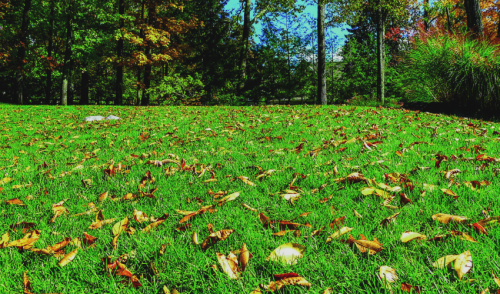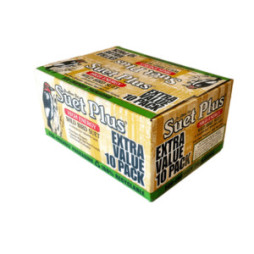Shop Local This Holiday Season
Whether you need to purchase gifts, greeting cards, dinner fixin's, baked goods, twinkle lights, decorations or even just some extra chairs, a new welcome mat,...

Grass blades may be going dormant in late summer, but your lawn's roots are still developing and fall is the ideal time for fertilizing. A healthy lawn with proper autumn nutrition will be better able to recover from summer's damage, resist the cold and drought of winter and fend off diseases, weeds and pests. But when should you fertilize in fall, and what should you use?
Fall Fertilizer Choices
All fertilizers include three principal nutrients, all of which are essential for a fall lawn.
The exact proportions of each nutrient will vary for different fertilizer blends and grass types. In early fall, a nitrogen-rich fertilizer will help turf recover from the summer and be prepared to green up well in spring, while later fertilizer applications should have more phosphorus to strengthen the root system.
When to Fertilize in Fall
Ideally, two fertilizer applications are best for fall lawns. The early treatment should be applied between late August and early September to help the lawn recover from extensive summer use and heat damage. A slow-release fertilizer is best at this time, and will nourish the lawn for several weeks. The later fall fertilization is best applied in late October or early November, and should be a quick release formula to give the lawn a healthy blast of nutrition before the roots are entirely dormant.
The best dates for fall fertilizations will vary depending on your local climate and the overall health of your lawn. A good rule of thumb is to be sure the heaviest summer heat has ended before the first application, and the second should always be applied before the first hard freeze.
Good Feeding for Your Fall Lawn
To make the most of both fall fertilizations, your lawn should be in good shape to absorb the fertilizer right away. Remove thatch before the treatment, and if it has not rained recently or the area is affected by ongoing droughts, water the lawn several hours before fertilizing so the nutrients can reach the roots more easily. It is best to apply treatments on a relatively cool day to minimize any chemical burn damage to the lawn, and the lawn should be thoroughly watered after the application as well.
For even more lawn nutrition, use a mulching lawn mower for late summer and fall mowing, and leave the clippings on the lawn to decay. If the soil is very thick clay or heavily compacted from use, aeration can be helpful and should be done before fertilizing.
Many homeowners look forward to the end of summer as the end of lawn care, but proper fertilization is still necessary to ensure a strong, healthy lawn that will recover well from the summer and be prepared to survive the winter.

Contains 10 Individually Wrapped High Energy Suet Plus Cakes.
On Sale: $12.88
Reg. Price: $19.99
Not valid with any other discounts or sales.
We currently do not have any events scheduled.

Whether you need to purchase gifts, greeting cards, dinner fixin's, baked goods, twinkle lights, decorations or even just some extra chairs, a new welcome mat,...
Comments